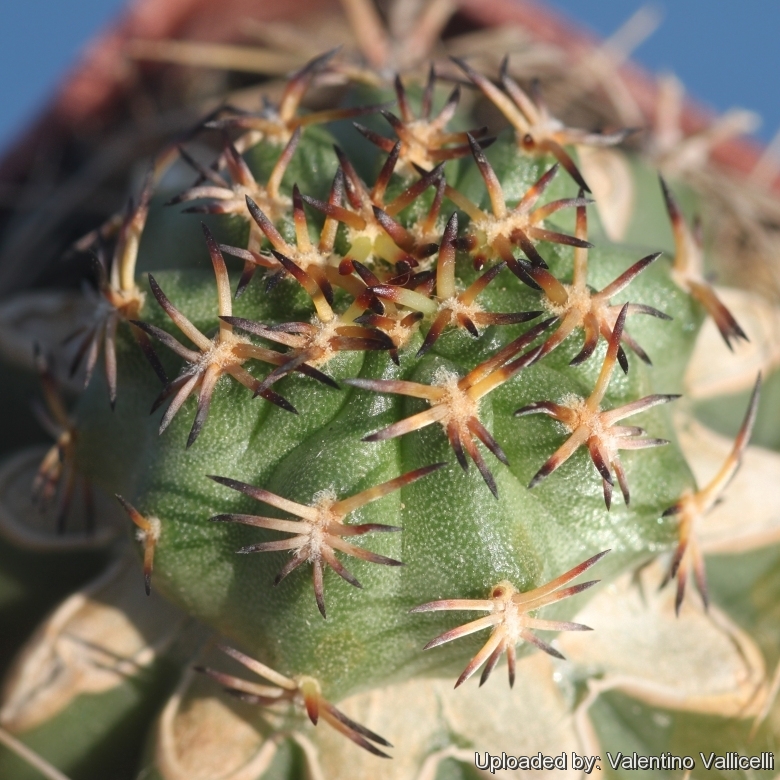
Pygmaeocereus bieblii var. kuehhasii Photo by: Valentino Vallicelli
Origin and Habitat: Ancash Province in the northern part of Cordillera Blanca, (Peru, Western South America)
Altitude: 530-610 m above sea level.
Synonyms:
See all synonyms of Pygmaeocereus bieblii
Description: Pygmaeocereus biebliiSN|3846]]SN|23793]] var. kuehhasii is the the low altitude form of Pygmaeocereus biebliiSN|23793]]SN|23793]]. This form is larger and with stronger and more slumberous spines, it look more similar to the familiar Pygmaeocereus bylesianusSN|23793]]SN|3846]] from southern Peru. It usually grows solitary but occasionally forms small clusters.
Stem: Spherical ao somewhat elongted, 4-7 cm in diameter and up to 13 cm tall.
Ribs: 10-25 low divided in shallow wart-like bumps.
Central spines: 4-5 mm in length and 1 mm in diameter.
Radial spines: 5-11 pectinate, amber-yellow to horn coloured with darker tips about 4-5 mm long (or more).
Flowers: Wide funnel-shaped, white 15-18 cm long , 4,5-6 cm in diameter; flower tube long and slender.
Fruit: 6-10 mm long, greenish to brownish red.
Subspecies, varieties, forms and cultivars of plants belonging to the Pygmaeocereus bieblii group
Cultivation and Propagation: This mountain cactus necessitate deep pots and a well drained mineral potting mix.
Need a sufficient amount of air. They are susceptible to overwatering, but need enough water during vegetation.
Frost Tolerance: They tolerate light frost -5 (-10) °C. Need to be kept in a cool place during winter rest this is important for the flowers as well as for their health. Without this cool winter period they normally wont get many buds.
Sun Exposure: Need a good amount of sun.
Propagation: Usually propagated by cuttings and grafting. Grafted plants in culture are most common and sprout strongly. But it is also feasible to root them but they grow much slower on their own roots and takes various years prior to they bloom. Seeds propagation also work well.










